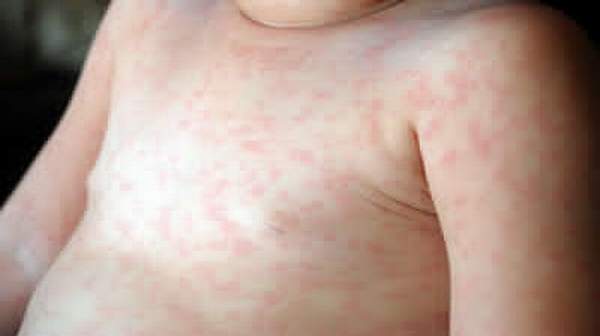What's in this article?
About Roseola
Roseola (also known as sixth disease, exanthem subitum, and roseola infantum) is a viral illness that most commonly affects young kids between 6 months and 2 years old.
It is usually marked by several days of high fever, followed by a distinctive rash just as the fever breaks.
Two common, closely related viruses can cause roseola, human herpesvirus (HHV) type 6 and type 7. These viruses belong to the same family as the better-knownherpes simplex viruses (HSV), but do not cause the cold sores and genital herpes infections that HSV can cause.
What is roseola in infants?
Roseola is a mild viral infection that affects babies and young children. The raised, red skin rash and high temperature can last from a few hours to five days. Roseola is caused by one of the viruses in the herpes group, but this virus can’t cause other herpes infections, such as cold sores.
What is the cause of roseola?
The most common cause of roseola is the human herpes virus 6, but the cause also can be another herpes virus human herpes virus 7. Like other viral illnesses, such as a common cold, roseola spreads from person to person through contact with an infected person’s respiratory secretions or saliva.
Is roseola contagious when rash is present?
It is contagious from about two days before the fever starts until 1 or 2 days after the fever is gone, even if the rash continues. Children who are fever-free for 1 or 2 days can return to school, even if they still haverash.
How long does it take for roseola rash to go away?
A sudden high fever that lasts for three to five days is an early feature of roseola. Mild nasal congestion and loose stools may accompany the fever. When the fever disappears, a rash appears, which may last one to two days. The rash is not contagious.
Roseola Symptoms
If your child is exposed to someone with roseola and becomes infected with the virus, it generally takes a week or two for signs and symptoms of infection to appear if they appear at all. It’s possible to become infected with roseola, but have signs and symptoms too mild to be readily noticeable. Roseola symptoms may include:
- Fever. Roseola typically starts with a sudden, high fever often greater than 103 F (39.4 C). Some children may also have a slightly sore throat, runny nose or cough along with or preceding the fever. Your child may also develop swollen lymph nodes in his or her neck along with the fever. The fever lasts three to five days.
- Rash. Once the fever subsides, a rash typically appears but not always. The rash consists of many small pink spots or patches. These spots are generally flat, but some may be raised. There may be a white ring around some of the spots. The rash usually starts on the chest, back and abdomen and then spreads to the neck and arms. It may or may not reach the legs and face. The rash, which isn’t itchy or uncomfortable, can last from several hours to several days before fading.
Other signs and symptoms of roseola may include:
- Irritability in infants and children
- Mild diarrhea
- Decreased appetite
- Swollen eyelids
Is roseola contagious?
Roseola is a mild contagious illness caused by either one of two viruses. Characteristically, roseola has a sudden onset and relatively short duration. Roseola is most common in children 6-24 months of age, with the average age around 9 months. Less frequently, older children, teens, and (rarely) adults may be infected.
How is roseola diagnosed?
Roseola is diagnosed through a medical history and physical exam. The doctor often knows it’s roseola if your child had a fever and now has a distinct rash.
Treatment for Roseola
There is no specific treatment for roseola. The disease usually gets better on its own without complications.
Acetaminophen (Tylenol) and cool sponge baths can help reduce the fever. Some children may have seizures when they get high fevers. If this occurs, call your doctor or go to the closest emergency room.
Things to remember
- Roseola is one of the very common mild viral illnesses that affect children aged between six months and three years.
- The fine, raised, red skin rash and high temperature can last from a few hours to three to five days.
- The rash can sometimes be confused with measles or rubella.
- The major problem that may occur as a result of roseola is the risk of febrile convulsions triggered by the fever.
- Treatment options include plenty of fluids, paracetamol, rest and care at home.







